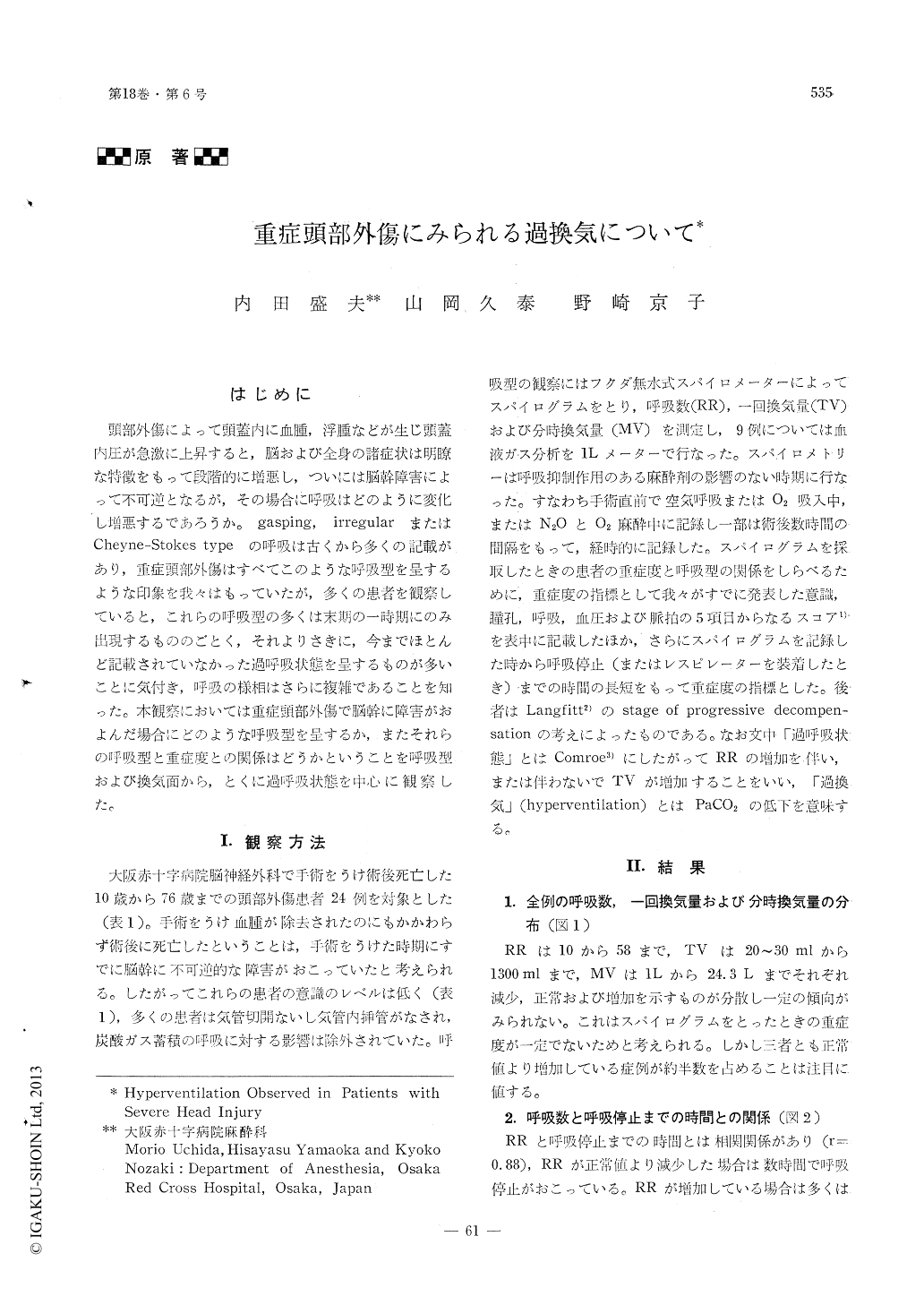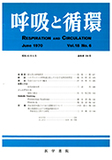Japanese
English
- 有料閲覧
- Abstract 文献概要
- 1ページ目 Look Inside
はじめに
頭部外傷によって頭蓋内に血腫,浮腫などが生じ頭蓋内圧が急激に上昇すると,脳および全身の諸症状は明瞭な特徴をもって段階的に増悪し,ついには脳幹障害によって不可逆となるが,その場合に呼吸はどのように変化し増悪するであろうか。gasping, irregular またはCheyne-Stokes type の呼吸は古くから多くの記載があり,重症頭部外傷はすべてこのような呼吸型を呈するような印象を我々はもっていたが,多くの患者を観察していると,これらの呼吸型の多くは末期の一時期にのみ出現するもののごとく,それよりさきに,今までほとんど記載されていなかった過呼吸状態を呈するものが多いことに気付き,呼吸の様相はさらに複雑であることを知った。本観察においては重症頭部外傷で脳幹に障害がおよんだ場合にどのような呼吸型を呈するか,またそれらの呼吸型と重症度との関係はどうかということを呼吸型および換気面から,とくに過呼吸状態を中心に観察した。
Characteristic alterations of respiratory pat-tern in twenty four severe acute head injuries were studied by means of spirogram and blood gas analysis. All the patients, aged from 10 to 76 years were suspected to have irreversible brain-stem damage before the operation and none of them survived postope-ratively. No respiratory depressant was used preoperatively, and most of their spirograms were monitored prior to the operation, but some of them postoperatively. In 9 patientsarterial blood samples for PCO2, PO2 and pH and spirogramms were taken simultaneousely.
At the early stage of brain-stem damage defined by coma, decebrated rigidity, dilated pupils and no hypotension, the respiratory pattern showed hyperventilation with increas-ed rate, normal or increased tidal volume, increased minute volume, reduced PaCO2 and high pH. This pattern of hyperventilation was very characteristic clinically. It was metronomically regular, rapid and somewhat labored, and inspiratory and exspiratory phasesof respiratory cycle were equal in length. This pattern of respiration is very resembled to "central neurogenic hyperventilation" describ-ed by Plum (1959) in the patients with medial pontile destruction. The respiration of this stage was arrested within average 50 hours.
At the late stage, the blood pressure was liable to fall and the respiratory pattern de-veloped into several types of hypoventilation such as Cheyne-Stokes, irregular or gasping type. Apnea was encountered within average 15 hours in this type.

Copyright © 1970, Igaku-Shoin Ltd. All rights reserved.


